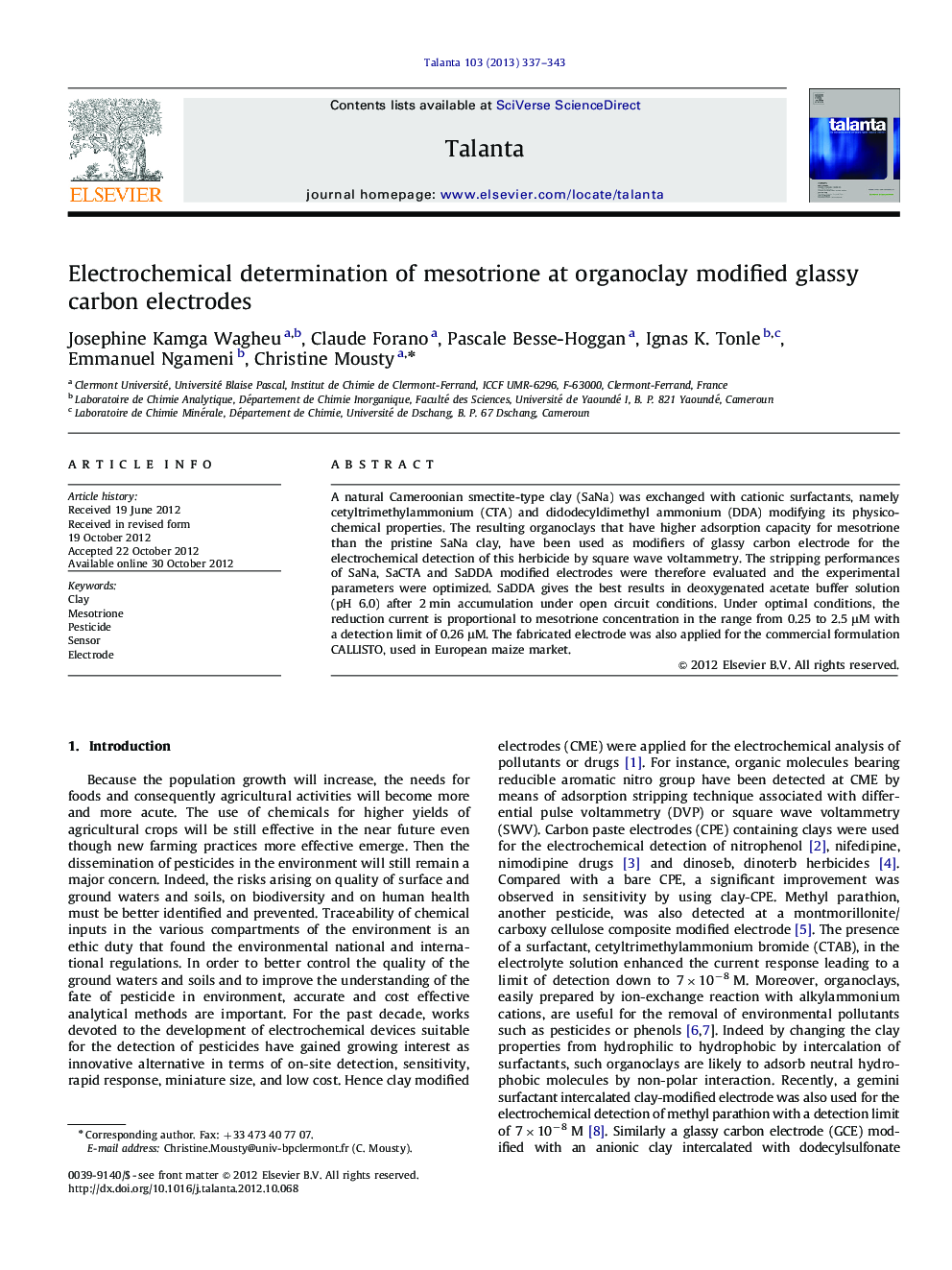| Article ID | Journal | Published Year | Pages | File Type |
|---|---|---|---|---|
| 1242938 | Talanta | 2013 | 7 Pages |
A natural Cameroonian smectite-type clay (SaNa) was exchanged with cationic surfactants, namely cetyltrimethylammonium (CTA) and didodecyldimethyl ammonium (DDA) modifying its physico-chemical properties. The resulting organoclays that have higher adsorption capacity for mesotrione than the pristine SaNa clay, have been used as modifiers of glassy carbon electrode for the electrochemical detection of this herbicide by square wave voltammetry. The stripping performances of SaNa, SaCTA and SaDDA modified electrodes were therefore evaluated and the experimental parameters were optimized. SaDDA gives the best results in deoxygenated acetate buffer solution (pH 6.0) after 2 min accumulation under open circuit conditions. Under optimal conditions, the reduction current is proportional to mesotrione concentration in the range from 0.25 to 2.5 μM with a detection limit of 0.26 μM. The fabricated electrode was also applied for the commercial formulation CALLISTO, used in European maize market.
► Detection of Mesotrione and Callisto herbicides by electrochemical analysis. ► Adsorption of herbicides on organoclays. ► Stripping analysis by SWV at clay modified electrodes.
